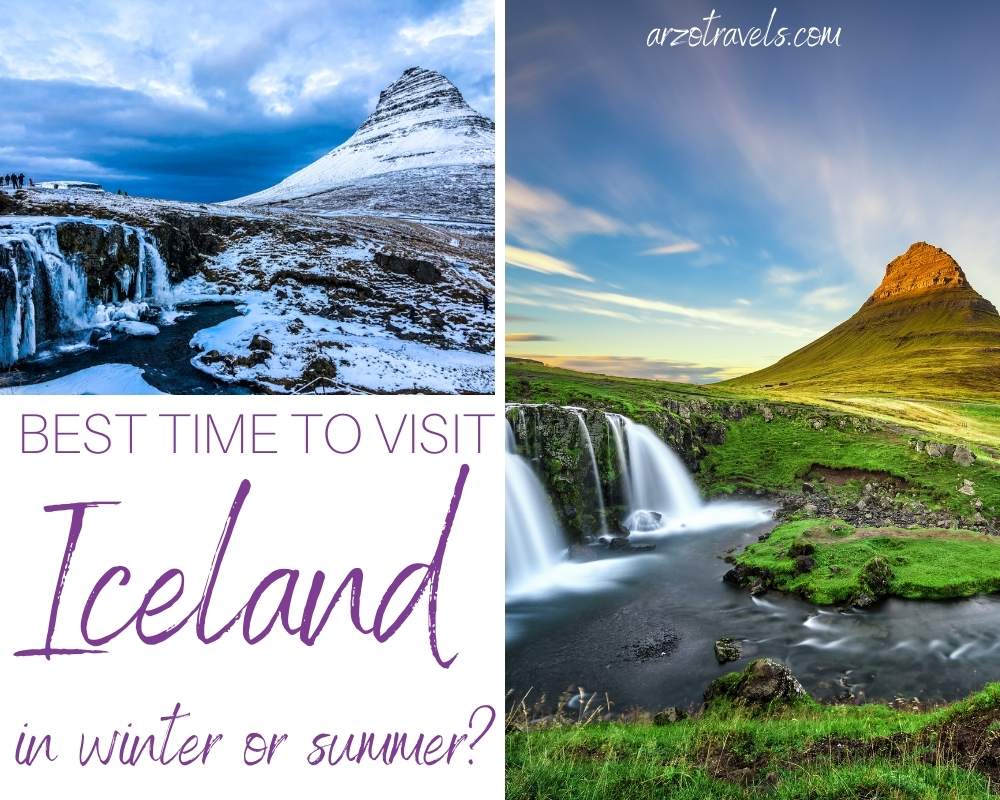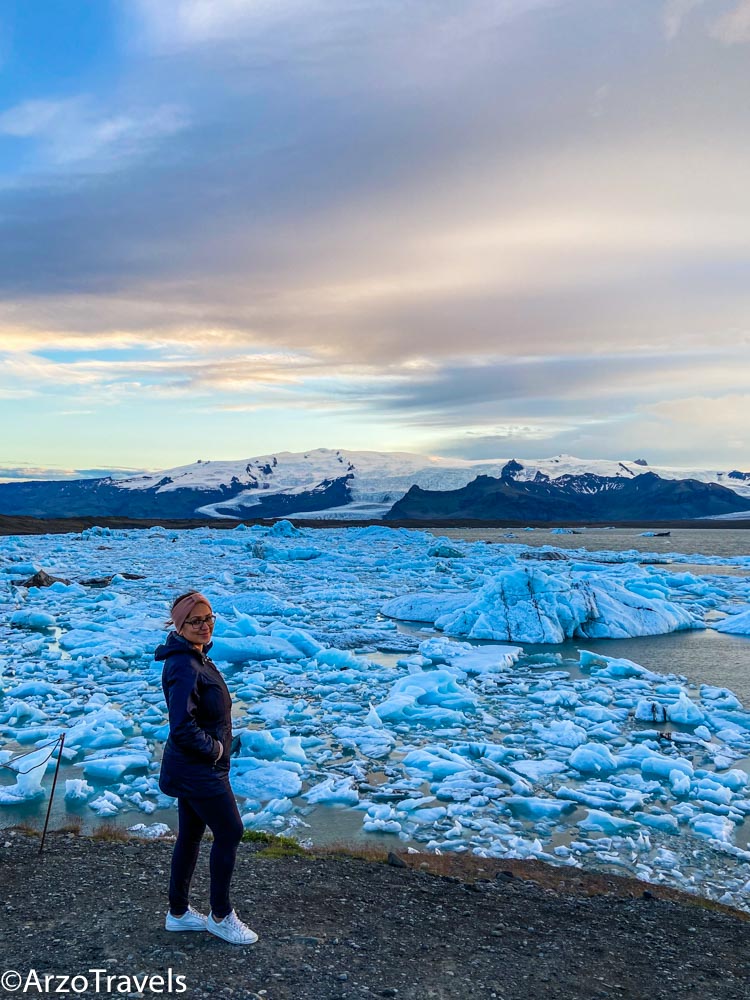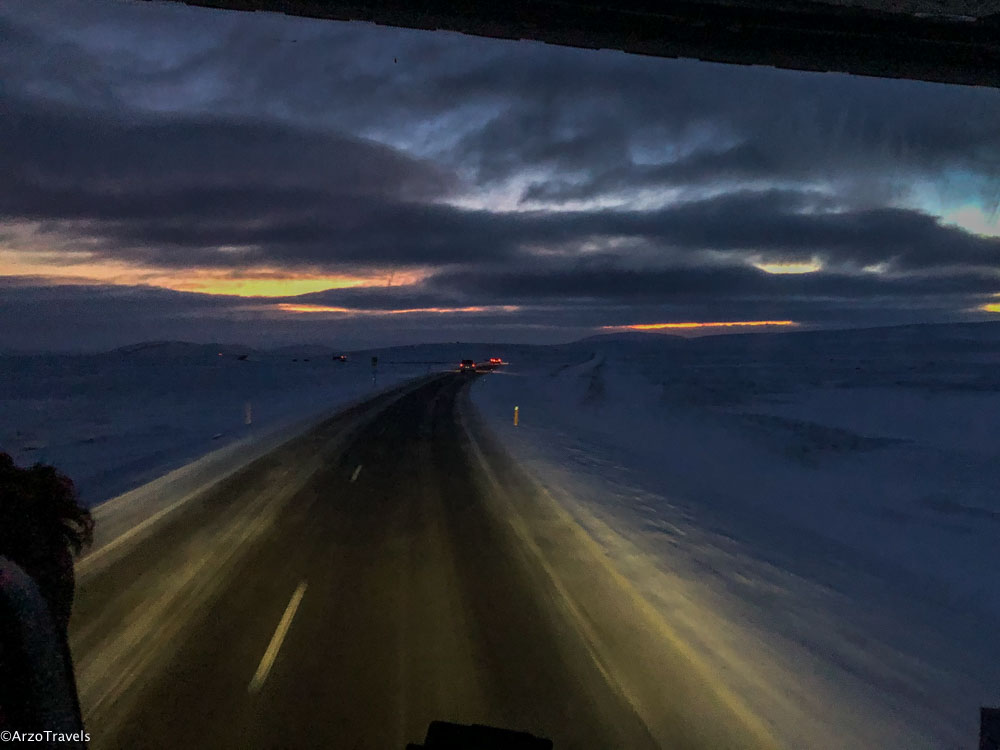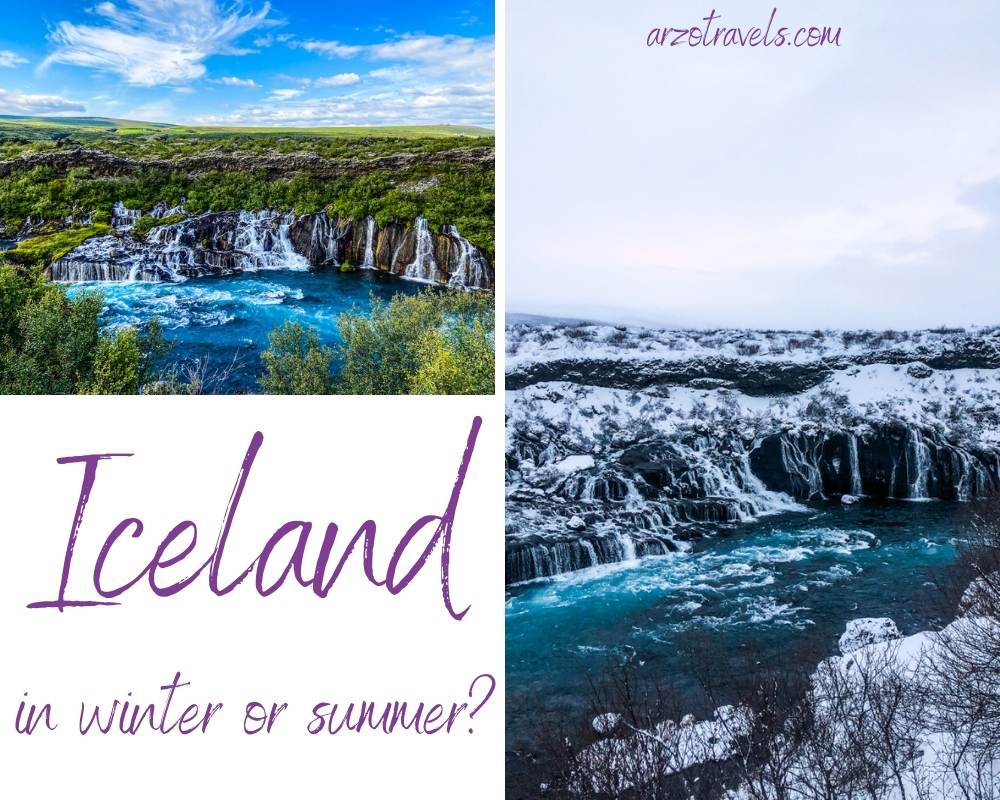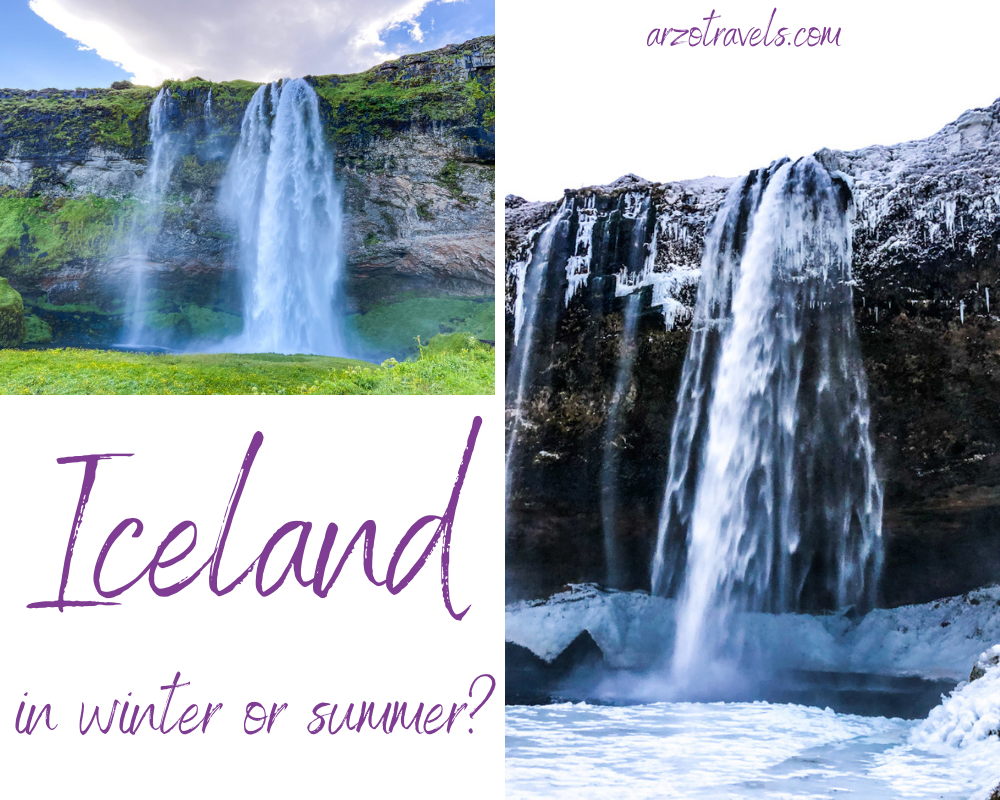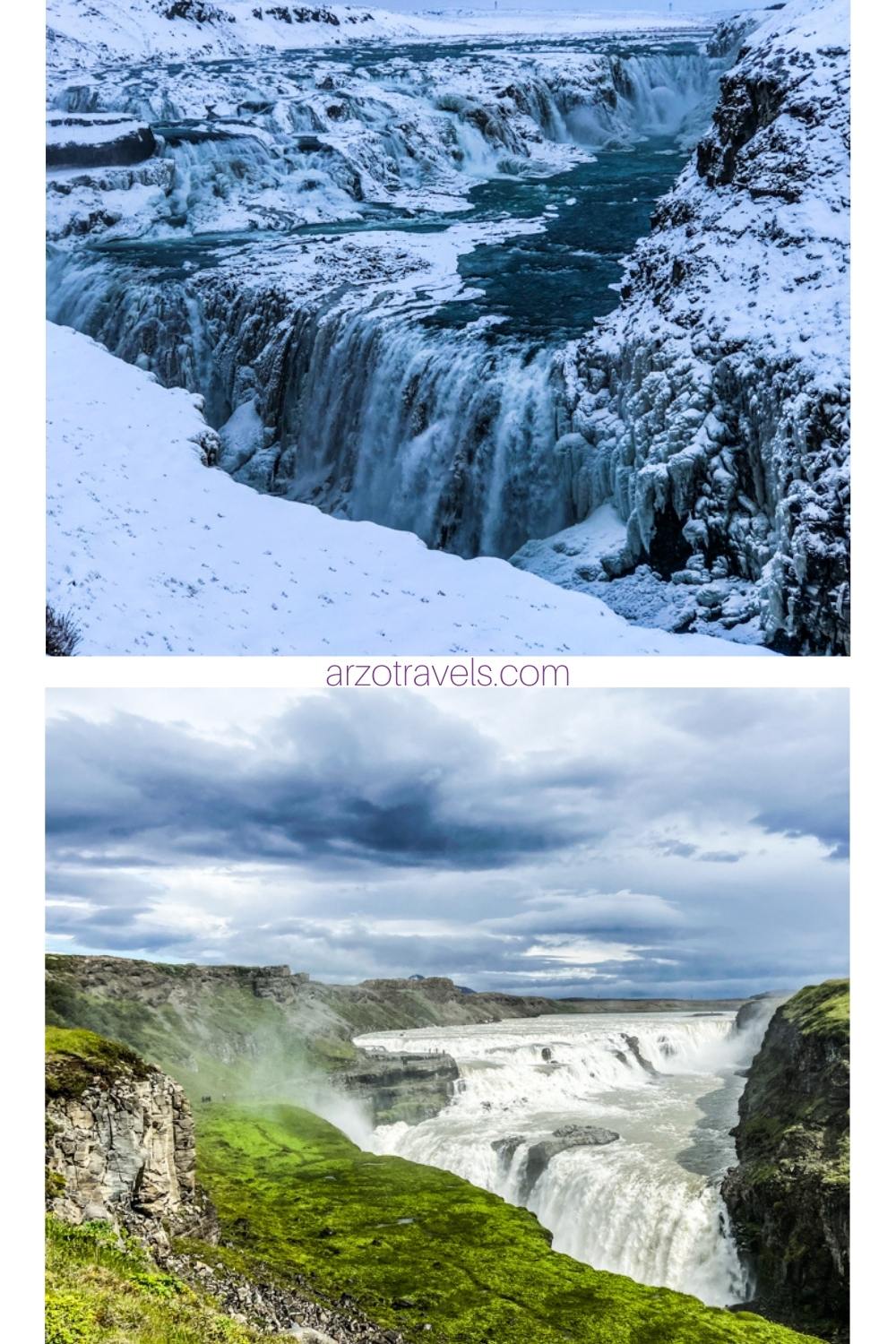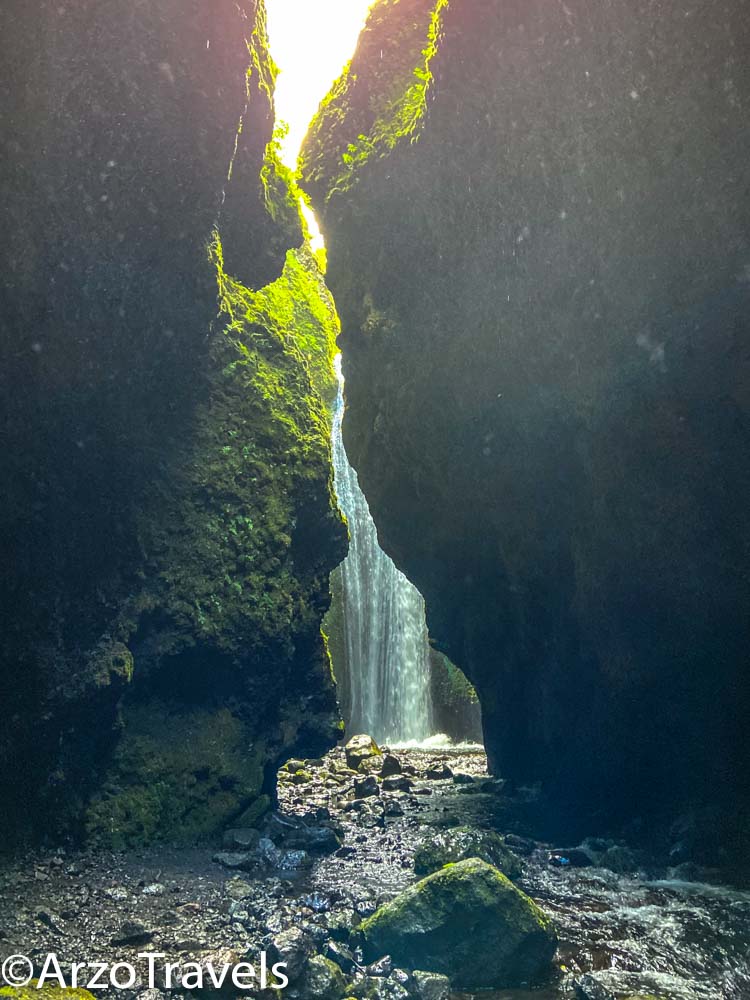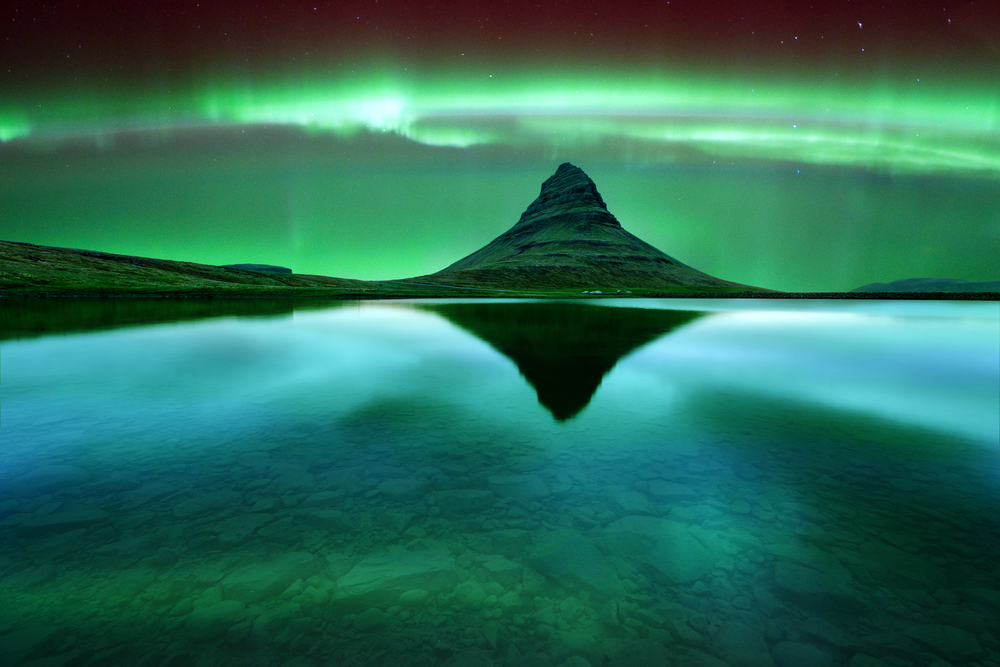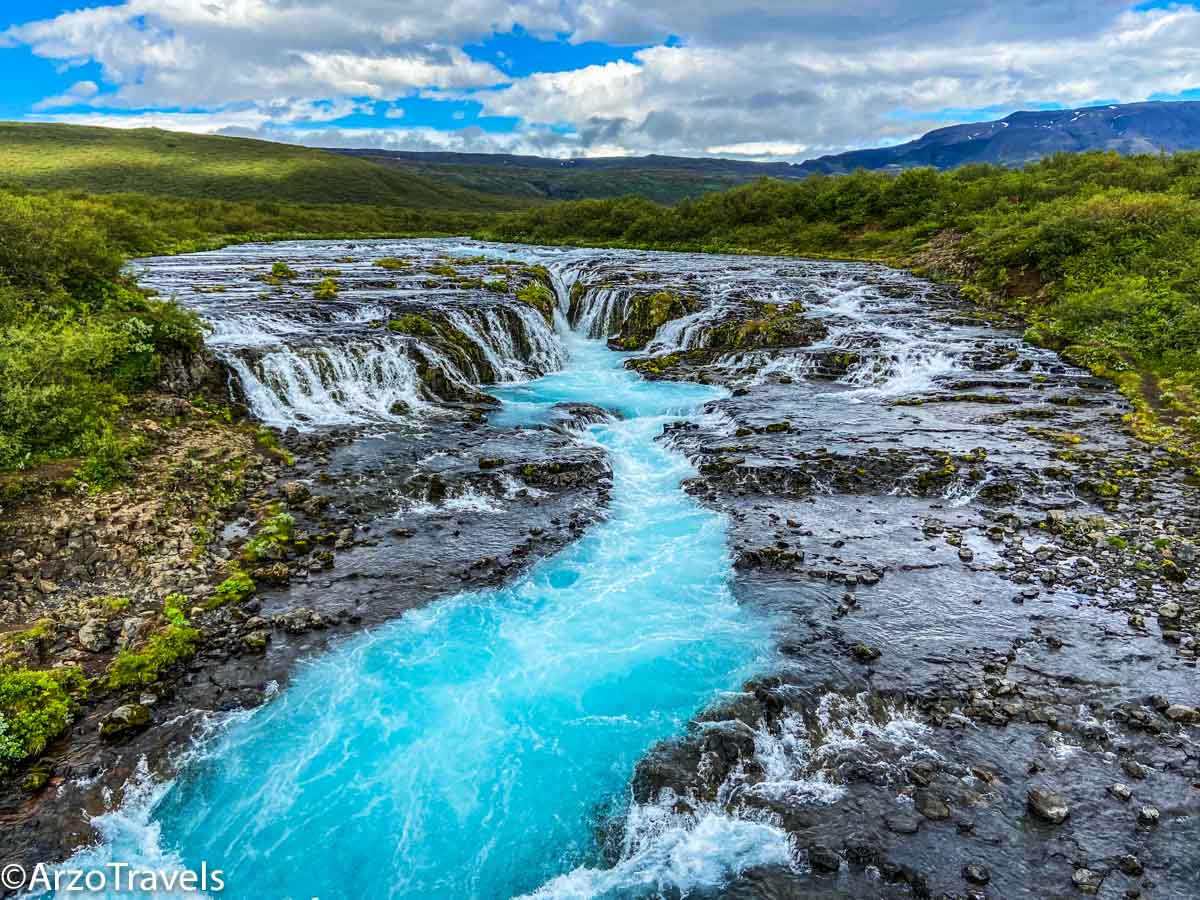BEST TIME TO VISIT ICELAND
Have you added Iceland to your bucket list and are now wondering about the best time to visit Iceland? Are you wondering whether Iceland in summer or winter is the best time for an amazing Iceland trip? Then read on, as there are things to know about the best travel time for Iceland. I share my tips on whether you should visit Iceland in winter or summer (and which months are the best for your Iceland trip).
HOW TO DECIDE WHETHER TO VISIT IN WINTER OR SUMMER
Iceland is truly a magical place. With its many volcanos and glaciers, Iceland is known as the Land of Fire and Ice. It is also rich in many more natural attractions like hot springs, waterfalls, geysers, and more. So, this all is no secret. However, to experience Iceland at its best, you should carefully plan when to visit Iceland.
Iceland is located near the Arctic Circle. This location has many, many benefits – but also some “disadvantages.” You have a winter wonderland in winter with concise days, while in summer, you have endless days with 24 hours of daylight.
SEASONS IN ICELAND
There are actually four seasons in Iceland.
- Summer in Iceland – June, July, August, and September
- Fall in Iceland – September, October, November, and December
- Winter in Iceland – December, January, February, and March
- Spring in Iceland – March, April, May, and June
However, for this post, I refer to summer from May to September and to winter from November to March (just leaving some months out).
After visiting Iceland in winter (December and January), I knew I had to revisit. So, I revisited it in the summer months. And both trips were unique and unforgettable – but could not have been more different.
Do I have a favorite time to visit Iceland? Yes and no. Visiting Iceland in summer or winter was extreme – both times. So, I have created a couple of categories that should help figure out the best time to go to Iceland.
ICELAND – WEATHER AND DAYLIGHT IN SUMMER AND WINTER
This category will be the longest because it is quite important.
SUMMER WEATHER AND DAYLIGHT IN ICELAND
Summer in Iceland is perfect if you want to experience long days.
Temperatures in Iceland are not comparable with temperatures in Central Europe or even Southern Europe. Temperatures can rise to 20-25 °C (68-77 °F), but most of the time they are about 10-15 °c (50-59 °F) with strong winds on the coast and a lot of rain (especially in Reykjavik).
The best about visiting Iceland in summer is the looong summer days – you might have heard about the magical Midnight Sun in the Nordic countries.
So what is the midnight sun? It is a natural phenomenon that occurs during the summer in places south and north of the Antarctic Circle – including Iceland. The Earth rotates at a tilted axis relative to the Sun, and near the 21st of June, the north pole is tilted toward the Sun, and the northern hemisphere experiences summer solstice. For several weeks, the Sun never sets above the Arctic Circle, and the Sun remains visible even at Midnight.
- The peak of Iceland’s Midnight Sun is usually the 21st of June
- You can experience the Midnight Sun in Iceland between mid-May until mid-August
- You can see the Midnight Sun everywhere in Iceland
- Iceland’s daylight hours on the longest days of the year are 24 hours per day (May-July)
- Iceland’s daylight hours increase by 1-3 minutes every day between the 21st of December and the 21st of June, and then it decreases every day by 1-2 minutes.
So, what does it mean for visitors? Endless days that allow you hours of hours and hours of exploring. You can start your days very early and avoid the crowds – you can do all the “sightseeing” during the night and sleep during the day. And have places all (or almost) to yourself.
WINTER WEATHER AND DAYLIGHT IN ICELAND
Iceland in winter is not as cold as many think (and I thought) because the Gulf Stream flows along the west and south of Iceland and brings some “warmth”.
Reykjavik is in the southwest part of the country, and the average temperature is around 1-2°C (33-35°F) – but it can also drop to -10°C (14°F) in winter.
The further north you go, the colder it will get. Isafjordur, in the Icelandic Westfjords, can be inaccessible due to heavy snowfall at times. Isagjordour is just one of several places that gets isolated.
But the weather is something you can prepare for – dress accordingly, and you should be fine. However, short days are something that might be troublesome.
- Short days in Iceland in the winter because of the country’s high latitude
- The shortest day of the year is the 21st of December – there are only around 4 hours of daylight (depending on where exactly you are)
- The longest day in the middle of December is only 5 hours of daylight. Sunrise is around 11 am and sunset is between 3 and 4 pm
- Iceland’s daylight hours increase by 1-3 minutes every day between the 21st of December and the 21st of June, and then it decreases every day by 1-2 minutes.
So, how exactly does that impact exploring Iceland? I had known about short days, but nothing prepared me for THAT short days. After nine or ten days in Iceland, my mood went down rapidly. If you start your day at around 9 or 10 am, you cannot see much. If you sit in a car/bus and want to enjoy the scenery…you just cannot see much. The picture above is shortly before 11 am and the reason you can see a little bit, is because the street is lightened by the car lights. It just starts getting lighter before 11 am. You cannot do any outdoor sightseeing before 11 am, and you have to finish at around 3 pm. That honestly sucked.
Here is my packing list for your Iceland winter trip.
CONCLUSION: BEST WEATHER IN ICELAND
Given Iceland’s vastness, it will be impossible to see a lot in winter in 5 days just because of the little daylight. I loooooved the long days. This way, I could see much more of Iceland – I did not feel the need to hurry. Usually, I woke up at around 6 am and did some exploring, went back to my van, took a nap, explored again in the afternoon, and then continued my journey and arrived at the campsites only before Midnight. I mean, that is a perfect life for me.
I heard from people not being able to sleep because of the long days. Though I visited in July in a camper van, I slept well and had no issues with the long day. I loooooved the long days and think summer is an amazing time to visit Iceland.
ICELAND SCENERY IN WINTER OF SUMMER
Iceland’s scenery is impressive. But is Iceland more beautiful in summer or winter? This time, I will show you mostly photos and keep the talking to a minimum.
ICELAND SUMMER SCENERY
Iceland in summer means you have almost 24 hours a day to explore the country. See the greenery, moss-covered waterfalls, and more (only trees are a rarity in Iceland).
WINTER SCENERY IN ICELAND
Iceland is a winter wonderland – snow-capped mountains, frozen waterfalls, and more. Iceland in winter and summer could not be any more different – I visited places in summer and winter. Compare yourself.
CONCLUSION: IS ICELAND MORE BEAUTIFUL IN WINTER OR SUMMER
I have to say that Iceland in winter looks better than in summer, much better. It is more magical and special.
Polls of my Instagram followers, however, showed a tie for most places. So, like most things, it is just about your personal preferences, but I 100% root for the scenery in winter.
BETTER ICELAND ACTIVITIES IN WINTER OR SUMMER
Summer and winter offer both wonderful activities throughout the year. Most main sights in Iceland can be visited throughout the year. The Blue Lagoon, Diamond Beach, Gullfoss Waterfalls, Seljalandsfoss Waterfall, hot pools, and more – so, regardless of the time of your visit, there is no lack of attractions to visit and activities to do.
SUMMER ACTIVITIES IN ICELAND
See puffins, visit Glaumbaer, see Fjaðrárgljúfur Canyon, do a boat Tour on the Jökulsárlón Glacier Lagoon, go whale watching…There are a few attractions/activities you can only do in the summer months. Also, hiking in the summer months is possible. It will be too icy and dangerous to visit some of the beautiful attractions. This beautiful waterfall can only be visited in the summer months (if you do not want to risk your life). So, bring your hiking clothes and plan some epic hikes for snow-free hiking paths.
WINTER ACTIVITIES IN ICELAND
See ice waterfalls, celebrate NYE in Reykjavik, see the Northern Lights… for some attractions, it is best to come in winter. The Northern Lights might be the main reason for many to visit Iceland in the winter months. My take on it is: If the Northern Lights are your main reason to visit, then re-consider. I stayed in Iceland for 12 nights and just saw a very thin light…In pictures, they still looked amazing. Because the camera is able to catch the Northern Lights, the eye is not that great. So, in Iceland, you might experience wonderful lights dancing, but chances are much better in other parts of the world.
CONCLUSION: SUMMER OR WINTER ACTIVITIES
So, Iceland has some fantastic places and attractions to visit year-round. But if you want to experience a lot and do many attractions/tick off bucket-list items, then the summer months would be the better time to visit because more places are accessible and more unique activities are offered. So, in summer, add places like the secret Nauthusagil Waterfall, the pretty Fjaðrárgljúfur Canyon, or Bruarfoss Waterfall to your Iceland itinerary.
GETTING AROUND ICELAND IN SUMMER AND WINTER
Iceland is quite extensive, and its attractions are spread throughout the country. The bad news is that public transportation is pretty bad in Iceland. You can use it for Reykjavik or some other towns, but it is challenging to use it as the only or the main mode of transport.
There are basically only two ways to get around in Iceland: booking guided tours or doing a road trip.
HOW TO GET AROUND ICELAND IN SUMMER
Summer is the perfect time to explore Iceland on your own. Rent a var (and bring your own over) and do a Ring Road road trip (if you have at least 7-10 days) or a Golden Circle Tour plus a few detours if you have less than seven days. Many streets are in good condition, it is easy to drive and navigate, and there are sooooo many stunning stops along the way (that you have not even heard of). It might be a bit busy during the summer months, but if you leave the Golden Circle and Southern Iceland, fewer people are on the streets. This makes road tripping in summer even more fun.
Some parts of Iceland – especially the highlands (the famous F-roads) and some dirt roads- are only accessible via 4WD. But in summer, most places are accessible with a regular car, and if you want to drive the F-roads, you can.
As great as guided tours are, they are not comparable with driving yourself and stopping whenever you want.
You do not enjoy driving? Then do guided tours. I did a handful of guided tours in winter, and because it was dark until 11 am, I could not enjoy the scenery, but in summer, you can have fantastic window views if you do guided tours.
GETTING AROUND IN WINTER IN ICELAND
Winter is a challenging time to drive – while Reykjavik is still pretty okay to drive ( I saw cars sliding a couple of times, though). Outside of the capital and main routes like the Golden Circle, driving is not an easy task. Heavy snow and icy roads are only for experienced winter drivers. I did a lot of research on driving in winter (because road-tripping in winter was my initial plan). It is possible to drive, but most people (especially locals) do not advise road-tripping Iceland in winter.
Also, many streets and towns can become isolated and cut off from the rest of the country – meaning you might be stuck in a place for days.
So, in summer, road trips are excellent, in winter not so much. But how to you get around in Iceland in winter then?
Guided tours in Iceland are pretty good. Tours to most attractions are offered, and you can relax and enjoy the scenery while you are on a bus. I did a good number of guided tours. There was Wifi in all buses, knowledgeable guides and we visited the main places. But it was also a hassle – waiting for people from my group, not seeing all the places I would have loved, spending too much or too little time at a place…
CONCLUSION: HOW EASY IT IS TO GET AROUND IN SUMMER AND WINTER
In winter, tours are the best option to see the country. Tours have their advantages but also their disadvantages (at any time of the year). In summer, you can do guided tours or road trip Iceland. Winter in Iceland makes it really hard to get around on your own. Either you are brave and rent a car or you do guided tours only. So, Iceland in summer is the winner in this case.
P.S: There are tours for several days where you can see more of Iceland.
PRICES IN ICELAND
Iceland is expensive. Like really expensive. At any time of the year. BUT, Iceland is cheaper in the winter months.
PRICES IN ICELAND IN THE SUMMER
The summer months, especially June, July, and August, are the most popular months to visit Iceland, spiking prices for accommodation and rental cars e.g.
PRICES IN ICELAND IN WINTER
Visiting Iceland in winter is usually cheaper. However, visiting in December can be pricy because many people come here for NYE. If you visit in November or January/February you can save tons of money. For more info on costs, check out my post with how much I paid for my Iceland trips.
CONCLUSION: IS IT CHEAPER IN SUMMER OR WINTER
Iceland will always be a costly travel destination. Avoid June, July, and August, and also December. The shoulder season is the best time to visit for a budget-friendly trip (even if it is in spring or fall). So, this time, an Iceland winter trip wins against an Iceland summer trip.
BEST MONTHS TO VISIT ICELAND
Iceland is a fantastic country to visit year-round. However, it feels like two different countries in summer compared to winter.
Above mentioned categories might have helped you decide whether you should visit in the summer months or winter months (or even in “Spring” or “Fall”).
Personally, I think Iceland looked MUCH better in winter compared to summer. It had something more magical and more unique. I will never forget the winter trip because it was extreme. The good and the bad were extreme.
However, considering all the factors, especially daylight, summer is the best season to visit Iceland. It is more accessible and welcoming. The long days make it a perfect country to see.
You see, I am struggling to make a final, ultimate decision because about the best time to visit Iceland.
If you want to visit Iceland in the summer, I suggest visiting in June/July (despite the crowds and prices, just for the midnight sun) or late May or August. I recommend visiting November, January, or February (the days are longer, prices drop, and it is still a winter wonderland) for the winter months.
- Check out my Bruarfoss post
- Here is my 5-day Iceland itinerary (which is perfect for any time of the year)
- Here are the best places to stay in Iceland
- More tips for visiting Iceland in winter
- More tips for visiting Iceland in the summer
